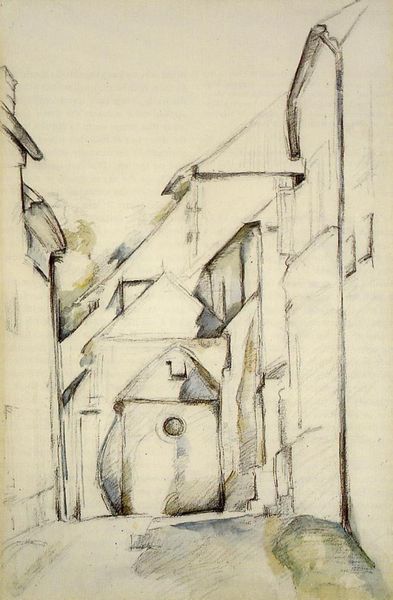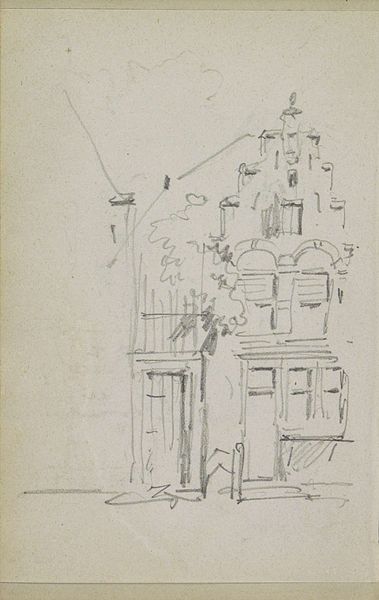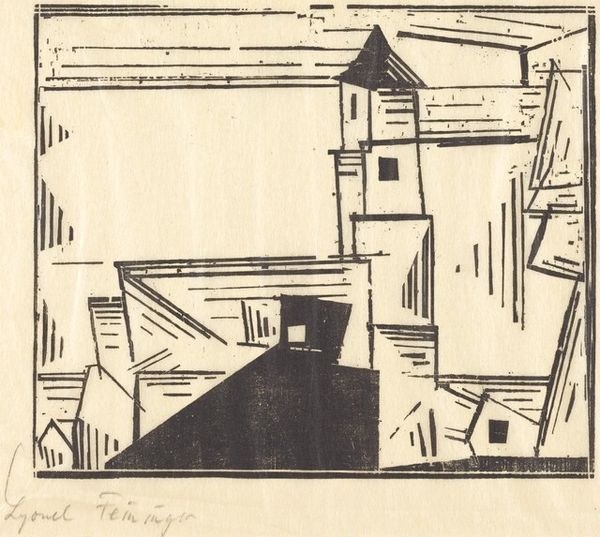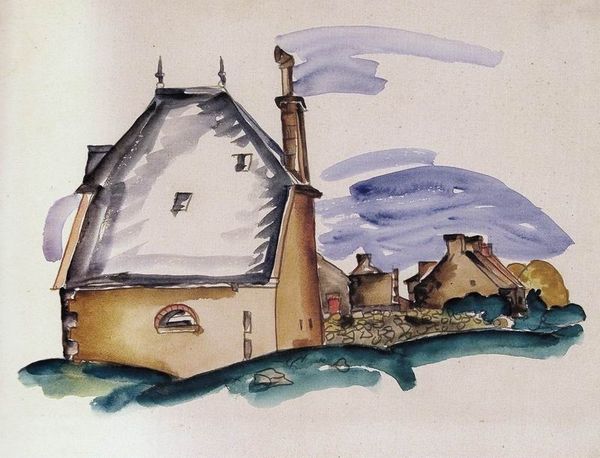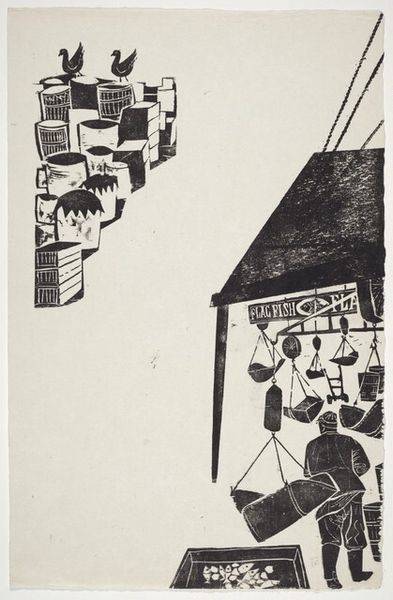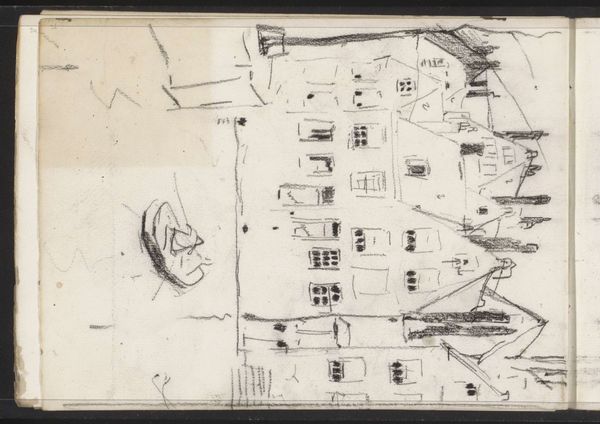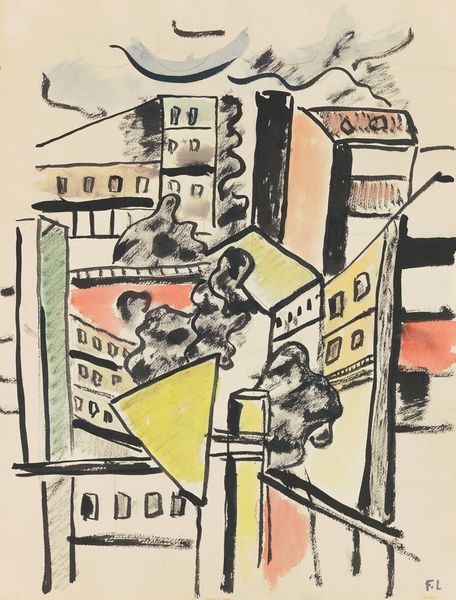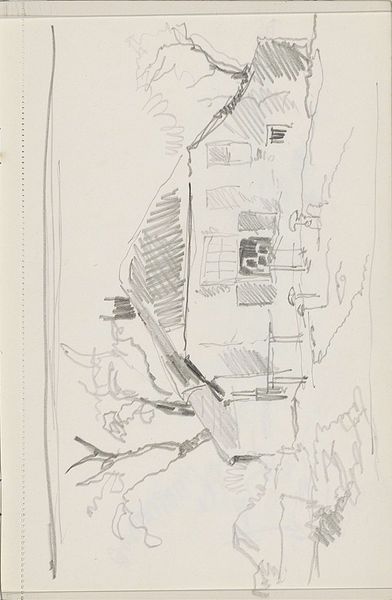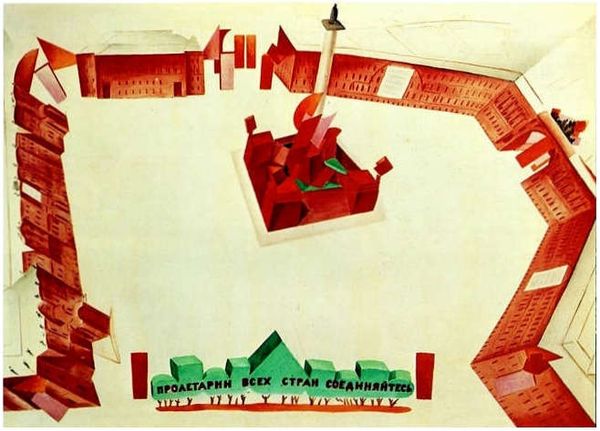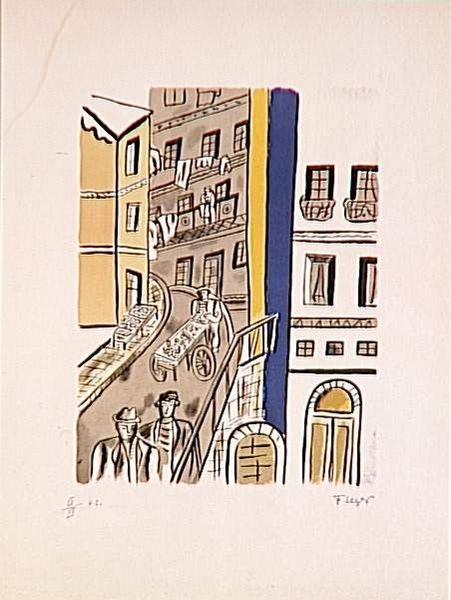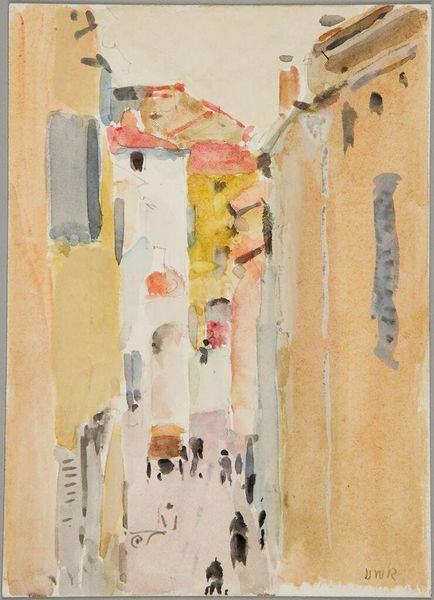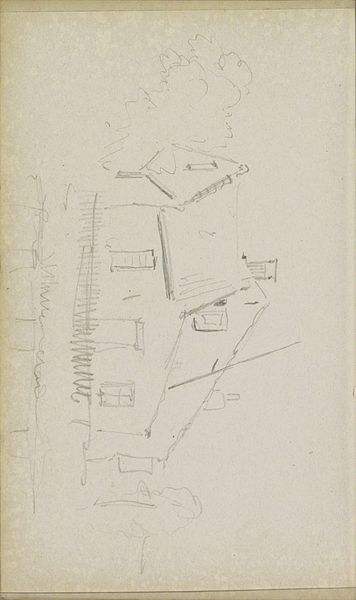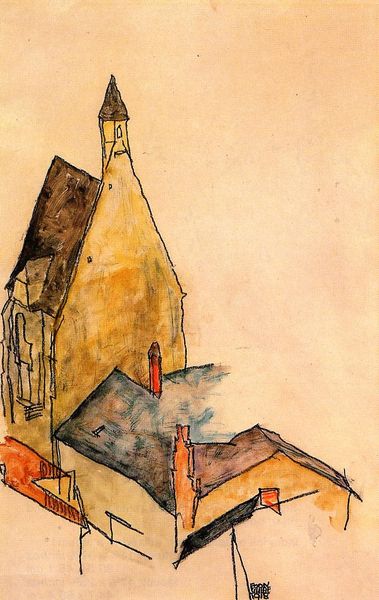
drawing, paper, ink, pen
#
drawing
#
pen sketch
#
pencil sketch
#
house
#
paper
#
ink
#
sketch
#
pen-ink sketch
#
expressionism
#
pen
#
cityscape
#
street
#
building
Copyright: Public domain
Curator: This is Egon Schiele's "Street in Krumau," a 1917 ink and pen drawing now held in a private collection. What's your immediate response to it? Editor: It feels a bit claustrophobic, actually. Like the buildings are leaning in, almost conspiring. And the tilted perspective, while interesting, adds to that unease. It’s got this feverish energy. Curator: Yes, the skewed perspective certainly destabilizes conventional notions of space. Formally, consider how Schiele employs stark lines and a somewhat limited color palette—red, yellow, black—to create a palpable sense of tension. Editor: Absolutely. The color is deliberate; that vibrant red really grabs you. Is he saying something about the buildings’ vitality, maybe a pulse beneath the surface? Or is it warning signal? I imagine the town itself was bursting with secrets during that time. Curator: Indeed. The exaggerated lines of the architecture might symbolize societal anxieties simmering during World War I. Structurally, notice the convergence of lines towards a vanishing point, not quite centered, drawing the eye upward. Semiotically, it represents a climb towards uncertainty. Editor: That vanishing point gives a direction, I guess, an implication. Although to me, these are not cold symbols. You can imagine walking here; smelling the must of history layered in those walls and almost feeling Schiele's frantic energy translated into his mark-making. It gives life to it beyond mere representation. What strikes me too is the size. Why did Schiele chose such a scale for that vision? Curator: Scale is relevant; the intimate size necessitates close viewing, intensifying the visual experience. Schiele wants a direct and concentrated visual consumption of his expression. But consider, his technical choices also reveal his emotional landscape at this moment. The architecture, as an exploration of structure and decay, is paramount. Editor: Right, structure, but maybe that decay—that unease—is also about Schiele acknowledging his mortality through those structures? This tiny sketch manages to open a whole, uneasy world for me. Curator: Precisely; it functions as both objective observation and subjective expression, a key component of Schiele’s enduring power. Editor: Well, after spending a little time with "Street in Krumau", I'm happy to carry its unsettling hum with me a little longer. Curator: And on my part, I can restate how effectively Schiele exploits those elements, allowing him to reach the pinnacle of emotional visual narrative through pure compositional precision.
Comments
No comments
Be the first to comment and join the conversation on the ultimate creative platform.
